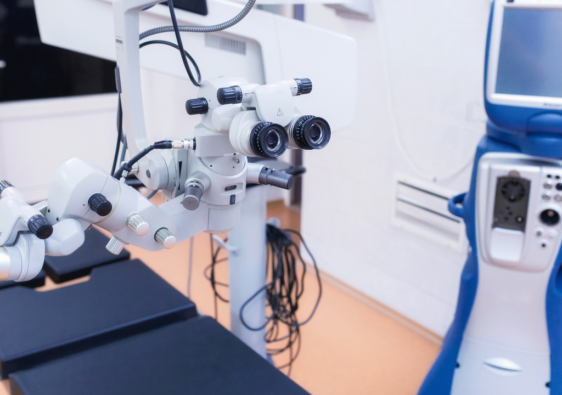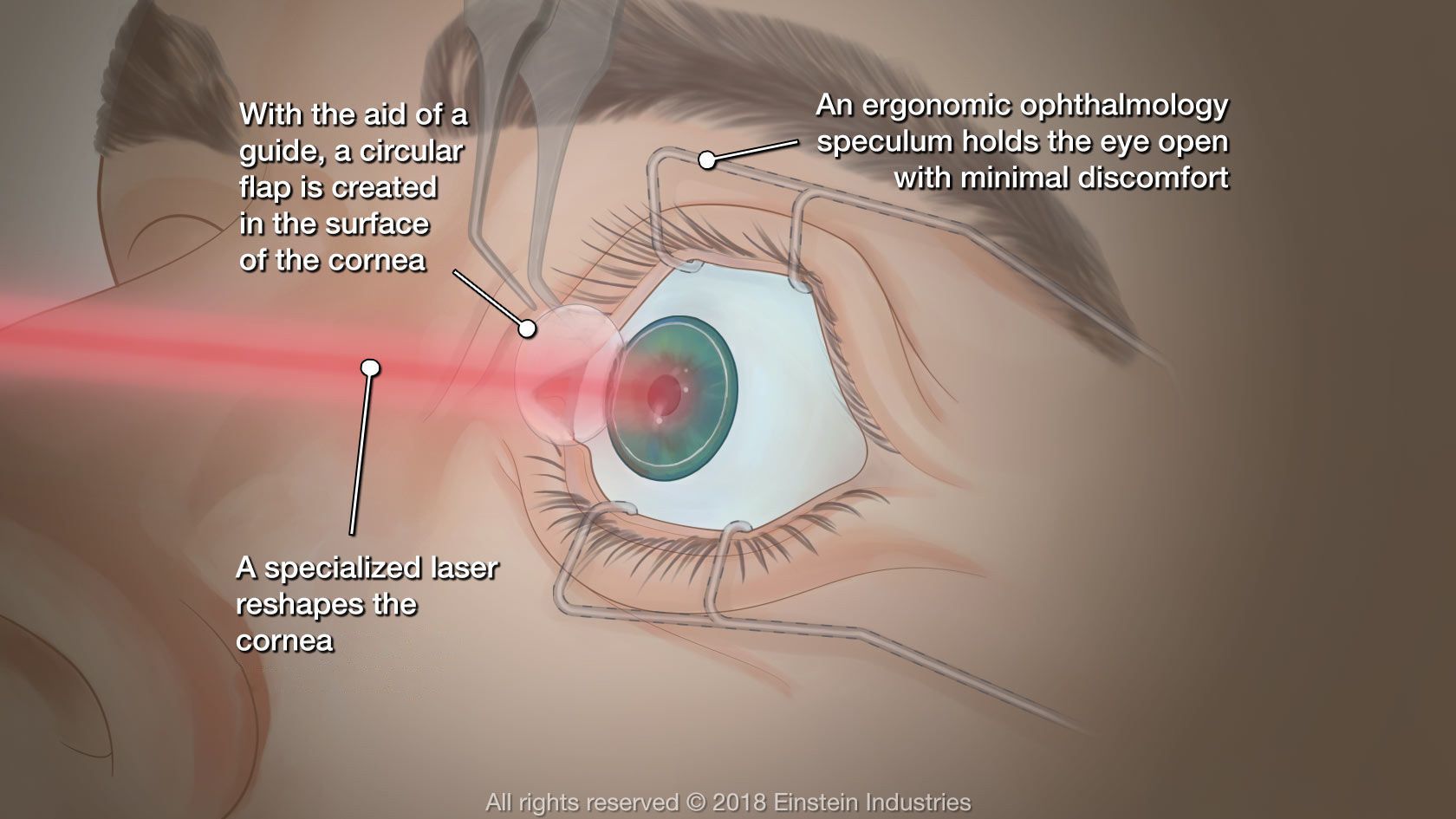Laser eye surgery has revolutionised the way millions of people see the world — literally. From ditching glasses to enjoying crystal-clear vision, it’s a life-changing procedure. But one of the most common questions people ask before booking their appointment is: how long until I see clearly after laser eye surgery?
This guide walks you through everything you need to know about the laser eye surgery recovery timeline, including what happens during the procedure, how long recovery takes, potential risks, costs in 2025, and expert tips for smooth healing.
What Is Laser Eye Surgery?
Laser eye surgery is a medical procedure that reshapes the cornea — the clear front part of your eye — to correct vision problems such as nearsightedness (myopia), farsightedness (hyperopia), and astigmatism.
By adjusting the way light enters your eye, the laser helps focus images correctly on your retina, giving you clearer vision without glasses or contact lenses.
Types of Laser Eye Surgery
There are several types of laser vision correction, each using a slightly different technique but aiming for the same result — sharper sight.
1. LASIK (Laser-Assisted In Situ Keratomileusis)
The most popular type of laser eye surgery, LASIK involves creating a thin flap in the cornea, reshaping the underlying tissue with a laser, and then repositioning the flap.
- Recovery: Usually fast; most people see clearly within 24–48 hours.
- Best for: Mild to moderate vision issues and those seeking quick recovery.
2. PRK (Photorefractive Keratectomy)
PRK is similar to LASIK but doesn’t involve creating a flap. Instead, the outer layer of the cornea (epithelium) is removed entirely before reshaping begins.
- Recovery: Slower than LASIK — typically 1–2 weeks for clear vision.
- Best for: People with thinner corneas or those in high-risk physical jobs.
3. SMILE (Small Incision Lenticule Extraction)
SMILE is a minimally invasive laser eye treatment that uses a femtosecond laser to create a small lens-shaped piece of tissue inside the cornea, which is then removed through a tiny incision.
- Recovery: Rapid; many patients return to normal activities within a few days.
- Best for: Myopia and mild astigmatism.
Who Is Eligible for Laser Eye Surgery?
You may be a good candidate for laser eye surgery if you:
- Are over 18 years old (vision should be stable for at least one year).
- Have a healthy cornea and overall good eye health.
- Are not pregnant or breastfeeding.
- Don’t have severe dry eyes, glaucoma, or corneal diseases.
Your ophthalmologist will conduct a detailed eye exam to determine which type of laser eye surgery suits you best.
The Laser Eye Surgery Procedure: Step-by-Step
Here’s what typically happens on surgery day:
- Preparation: Your eyes are numbed using anesthetic drops.
- Corneal reshaping: Depending on the procedure, the surgeon reshapes your cornea using a precision laser.
- Completion: The flap (in LASIK) is repositioned or, in PRK, the corneal surface begins to heal naturally.
- Duration: The entire process takes about 10–15 minutes per eye.
You’ll be able to go home the same day — but you’ll need someone to drive you.

Laser Eye Surgery Recovery Timeline
First 24 Hours
- Mild discomfort, dryness, or watery eyes are common.
- Your vision may be hazy or fluctuating.
- Avoid rubbing your eyes or exposing them to bright lights.
Days 2–7
- Vision typically stabilises for LASIK and SMILE patients.
- PRK patients may still experience blurriness as the corneal surface heals.
- Eye drops and antibiotics help prevent infection and dryness.
Weeks 2–4
- Most patients return to normal activities, including work and exercise.
- Vision clarity improves daily.
- Avoid swimming pools, saunas, and eye makeup during this period.
Months 3–6
- Full vision stabilisation occurs, especially for PRK patients.
- Your ophthalmologist may schedule follow-up visits to monitor healing.
After 6 Months
- Long-term results are typically stable and permanent.
- You can enjoy clear, sharp vision without dependency on glasses.
Benefits of Laser Eye Surgery
- Quick results: Clearer vision within days.
- Permanent correction: Most patients no longer need corrective lenses.
- Minimal pain: Modern lasers make the procedure virtually painless.
- Improved confidence and lifestyle flexibility.
Potential Risks and Side Effects
While generally safe, laser eye surgery can have side effects such as:
- Temporary dryness or irritation
- Glare or halos around lights (especially at night)
- Under or over-correction (rare with advanced technology)
- Infection or inflammation (very rare)
Your surgeon will provide personalised care instructions to reduce these risks.
Laser Eye Surgery Cost in 2025
In 2025, laser eye surgery in Australia typically costs between $2,000 and $3,500 per eye, depending on:
- The type of surgery (LASIK, PRK, or SMILE)
- The surgeon’s experience
- The clinic’s technology and location
While Medicare doesn’t usually cover elective laser surgery, some private health insurance plans may help offset the cost. Many clinics also offer payment plans or interest-free financing options.
Long-Term Care and Lifestyle After Surgery
To maintain your results:
- Attend all post-surgery checkups.
- Wear UV-protective sunglasses outdoors.
- Use prescribed lubricating drops to manage dryness.
- Maintain regular eye exams every year.
Pro tip: Healthy habits like good hydration, omega-3-rich diets, and screen breaks can help your eyes stay comfortable long after surgery.
Conclusion: See Clearly, Live Freely
Laser eye surgery offers a powerful blend of science and convenience, allowing you to experience life with clear, natural vision. With proper care and realistic expectations, recovery is typically smooth and rewarding.
If you’re considering LASIK, PRK, or SMILE, consult a qualified ophthalmologist to determine the best procedure for your eyes — and look forward to a clearer, brighter tomorrow.
FAQS
Most patients are pleasantly surprised to find that laser eye surgery is virtually painless. Your eyes are numbed with anesthetic drops before the procedure, so you may only feel mild pressure or vibration. After surgery, some people experience slight dryness or irritation for a few hours, which typically eases quickly.
Recovery time depends on the type of surgery. LASIK and SMILE patients often notice clearer vision within 24–48 hours, while PRK may take up to 1–2 weeks as the cornea heals. Full stabilisation of vision can take three to six months, during which your eyesight continues to refine.
Yes — during the first few weeks, you’ll need to avoid swimming, eye makeup, and heavy workouts to reduce the risk of infection. It’s also best to wear sunglasses outdoors and refrain from rubbing your eyes. Following your doctor’s aftercare instructions will ensure the best healing outcome.
Some patients may experience dry eyes, light sensitivity, or halos around lights, especially at night, during the early recovery period. These effects are temporary and improve as your eyes heal. Using prescribed lubricating drops can greatly reduce discomfort and dryness.



